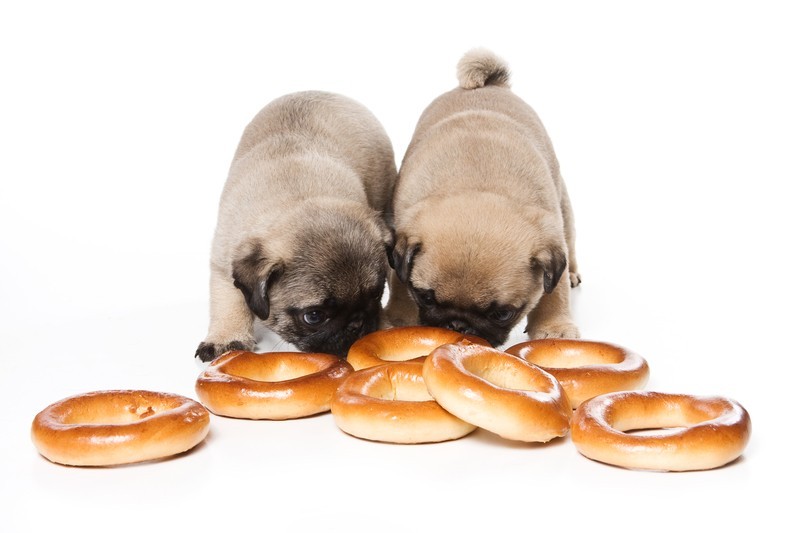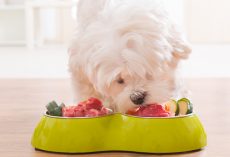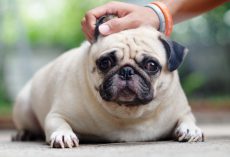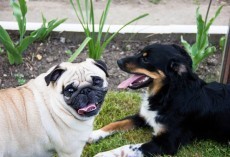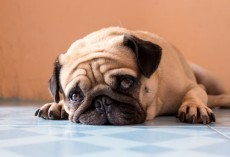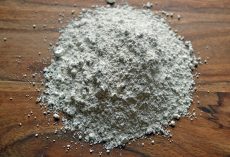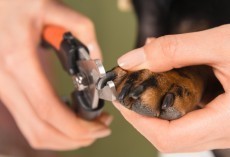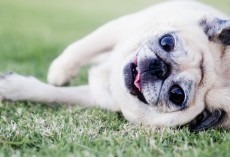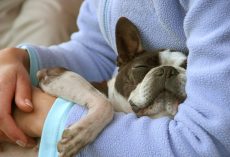Distracting your pooch and making sure he is getting enough exercise is another way to overcome pica. Your pup will require more effort during this time, so don't be hard on him. You'll need a specialist and other tips to help you through this with him.
The consumption of nonfood items is a disorder called pica. Although pica can be a sign that a dog’s diet is lacking in some nutrient, when pica occurs in puppies and young dogs the most common culprit is boredom. Rock eating is the most common form of pica, but dogs compulsively consume a variety of inedible objects.
Why Does My Dog Do It?
Normal Puppy Behavior
Puppies eat all kinds of objects, including nonfood items. Most puppies grow out of this behavior by six months of age without anything but mild discouragement from their owners.Compulsive Disorder
If you live with a junk-eating adult dog, she may suffer from a compulsive disorder. If she does, you’ll notice that she seems frequently and intensely motivated to find and eat specific nonfood objects, such as rocks, plastic bags, wood or clothing. Compulsive behavior won’t go away on its own.Grass or Soil Eating
Dogs often eat grass. Grass and soil may serve as dietary supplements, too. As long as a dog only eats grass or soil occasionally, this kind of pica doesn’t usually cause problems.Other Reasons Why Dogs Eat Nonfood Items
Various Medical Conditions
Your dog may ingest nonfood items because of a digestive disorder, a parasitic infestation, a metabolic disorder, a nutritional deficiency/dietary imbalance or poisoning.Resolving a Pica Problem
If your dog has a pica problem, providing plenty of appropriate things for her to play with and chew, along with interactive play opportunities with you, such as throwing a ball or playing tug-of-war, might resolve the issue and prevent the development of compulsive behavior.Pica in Puppies
• Provide plenty of mental exercise to keep your puppy busy. Give her a variety of toys and safe things to chew, such as a Tricky Treat™ ball, food-stuffed KONGS™ and Buster® Cubes.
• Provide plenty of physical exercise, too. Play tug and fetch with your puppy, go on walks together and let her play with dog buddies.
• Monitor your puppy at all times. Verbally discourage your puppy whenever you see her start to pick up something she shouldn’t eat. Redirect her attention to appropriate treats and toys instead.
• If your puppy starts to eat any nonfood items, quickly take them out of her mouth.What to Do About Compulsive Pica
If you’re trying to resolve compulsive pica, you should seek guidance from a Certified Applied Animal Behaviorist (CAAB or Associate CAAB) or a board-certified veterinary behaviorist (Dip ACVB).You could also try to manage your dog’s pica problem on your own using some of the following suggestions:
• Whenever possible, prevent access to all nonfood items that your dog tries to consume. Always supervise your dog carefully when she’s not in a safe dog-proofed area.
• Verbally discourage your dog whenever you see her start to pick up nonfood items.
• If your dog starts to eat a nonfood item, quickly but gently take it out of her mouth. Inedible objects can cause illness or internal blockages if your dog swallows them.
• Provide lots of mental and physical exercise. Try giving your dog a variety of toys, such as a Tricky Treat™ ball, food-stuffed KONGS™ and safe things to chew.
• Teach your dog the “leave it” cue, and then use it to ask her to leave inedible objects alone.
• Teach your dog the “drop it” cue. Then use it to ask her to spit out any nonfood items she picks up—before she swallows them.
• Use taste deterrents on nonfood items your dog might try to eat. Useful, safe taste deterrents for dogs include finely ground black pepper, crushed hot pepper, Tabasco® sauce and Grannick’s Bitter Apple® spray or gel.
• Another approach to the treatment of pica is taste aversion conditioning (training). Taste aversion works by making your dog sick. It’s different than using a taste deterrent or remote punisher, and it can work well to reduce pica. However, taste aversion isn’t practical if your dog is eating things that will harm him like stones or other dangerous objects.
If you're unable to supervise your pup because you have work during the day or another commitment, make sure your pup is in a space where he can't find dangerous items. Keeping him out of harm's way is essential and the doggy specialist you work with will have some great tips as well.
There's a lot more to learn about resolving a doggy pica condition, so head over to ASPCA to get the scoop.
